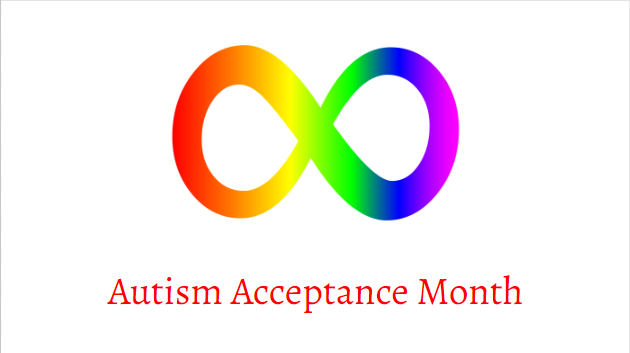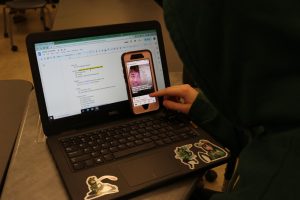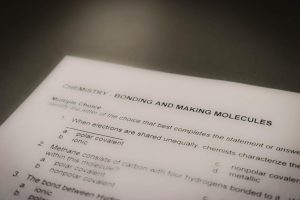The Importance of Autism Acceptance Month
The autistic community uses an infinity symbol to represent themselves. Although popular with people outside the community, the puzzle piece symbol is seen as offensive.
May 4, 2023
April is Autism Acceptance month, a very crucial time in a world where autism is still largely misunderstood. During this month, autistic people can let their voice be heard, and those without it can listen and learn what it’s really like to have autism.
Most people know very little about autism. It was first formally recognized by Leo Kanner in 1943, only 80 years ago. There is no cure, and doctors don’t know what causes it. The United Nations established the month in 2007, to acknowledge just how many people worldwide were being diagnosed.
Many high school students still see autism as a punchline or a disadvantage, and only focus on the negative traits, such as sensitivity to light and sound, trouble with eye contact, and trouble with social interactions. But there are positives to be found in it as well, such as being able to retain information about favorite topics (these are called ‘special interests’), creativity, and observation skills.
“Really, autism can be in anyone, from the most typical of dorks to the ‘jocks’”says one anonymous NAI sophomore with autism.
It cannot be stressed enough that the autism spectrum is huge and no two people are the same. Many autistic people live normal lives, and they are referred to as people with high-functioning autism. 10 years ago, these people would have been labeled as having Asperger’s Syndrome. However, this term was only used as a way to marginalize people with low-functioning autism, and Asperger’s is seen as an outdated diagnosis.
In truth, there are thousands of autistic people who are never diagnosed, due to not enough being known about the symptoms. As awareness goes up, so do diagnosis rates.
“About 1% of the world population is somewhere on the spectrum, which doesn’t sound like a lot, but that’s one in every hundred – way more than a lot of people think,” says the anonymous sophomore.
Most autism research has been done on young children, so teenagers and adults living with it struggle to find resources. However, knowledge about autism is starting to increase, and autistic teens are starting to feel more comfortable. “I think most people are accepting and accommodating nowadays,” says the student.
At North Allegheny, there are plenty of students who live with autism all with varying degrees of severity. NAI does well at keeping the school accessible, but there are always improvements that could be made.
“Something I always thought would be nice is some sort of relaxing sensory area,” the student says about NAI. “Either that, or just some sort of quiet space to use if needed would be appreciated on days when I’m overwhelmed.”
An area in the school like this could benefit autistic students with sensory issues. High school is already such a stressful environment on its own, and the large crowds of yelling students is hard to deal with for those who are sensitive to it.
Autistic acceptance is important all throughout the year, not just in April. The stigma surrounding it is still heavily prominent, although many people – including your friends, classmates, or family – may have it and just not know. Being informed on the symptoms makes it easier to be sympathetic and understanding towards autistic peers, and getting diagnosed if you think you may have it can change your life.
“Lots of people [have more stereotypical symptoms],” says the NAI sophomore, “Maybe they can’t speak perfectly, or can’t complete certain tasks without assistance, but autism can be so many things.”

















Matthew White • Apr 2, 2024 at 2:40 pm
Thank you so much for sharing this is very well written. Thank you for your kind words
Abigail Peigh • May 6, 2023 at 2:11 pm
thank you for finally highlight the positives of autism, especially for those of us who may be seen differently and making it more widely known, i am actually an autistic individual and i loved how well written this was, thank you for showing how some things are positive and not everything is negative! wish there more people like you! thank you so much